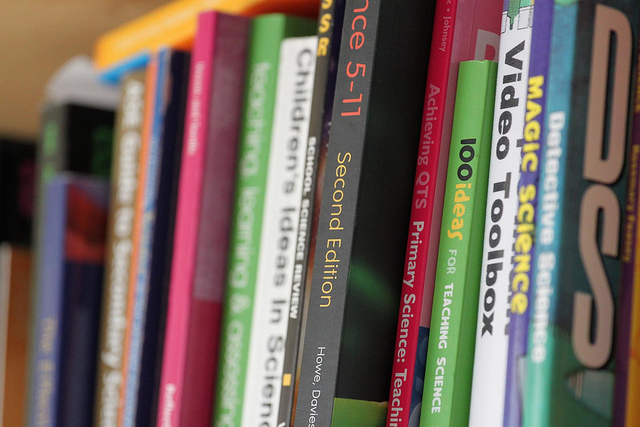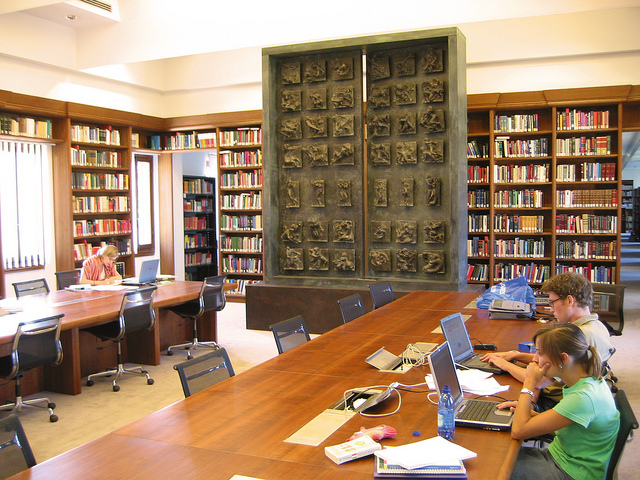Chapter 1: Getting Started with Texts
Introduction to Chapter 1

Throughout your experience in college you will be asked to read texts that cover many different subjects or disciplines. This chapter will help you get started with using an effective reading process so that you can better understand the variety of material you will encounter in college-level courses.
1.1 What Is a Text?
Before we go over what it means to use a pre-reading process, we need to discuss an important question: What is a text?
As a college student, much of your time will be spent interacting with texts of all types, shapes, sizes, and delivery methods. In the following sections, we will explore the nature of texts, what they will mean to you, and how to read and use them effectively.
In academic terms, a text is anything that conveys a set of meanings to the person who examines it. You might have thought that texts were limited to written materials, such as books, magazines, newspapers, and ‘zines (an informal term for magazine that refers especially to fanzines and webzines). Those items are indeed texts—but so are movies, paintings, television shows, songs, political cartoons, online materials, advertisements, maps, works of art, and even rooms full of people. If we can look at something, explore it, find layers of meaning in it, and draw information and conclusions from it, we’re looking at a text.
1.2 Reading in College Compared to Reading in High School
Think back to a high school history or literature class. Those were probably the classes in which you had the most reading. You would be assigned a chapter, or a few pages in a chapter, with the expectation that you would be discussing the reading assignment in class. In class, the teacher would guide you and your classmates through a review of your reading and ask questions to keep the discussion moving. The teacher usually was a key part of how you learned from your reading.
If you have been away from school for some time, it is likely that your reading has been fairly casual. While time spent with your favorite novel, a magazine, a or newspaper can be important, it is not the sort of concentrated reading you will do in college.
In college, reading is much different. You will be expected to read much more. For each hour you spend in the classroom, you will be expected to spend at least two or three additional hours studying between classes, and most of that will be reading.
Assignments will be longer (a couple of chapters is common, compared with perhaps only a few pages in high school) and much more difficult. College textbook authors write using many technical terms and include complex ideas. Many college authors include research, and some textbooks are written in a style you may find very dry.
You will also have to read from a variety of sources: your textbook, ancillary materials, primary sources, academic journals, periodicals, and online postings.
Your assignments in literature courses will be complete books, possibly with convoluted plots and unusual wording or dialects, and they may have so many characters you will feel like you need a scorecard to keep them straight.
In college, most instructors do not spend much time reviewing the reading assignment in class. Rather, they expect that you have done the assignment before coming to class and understand the material. The class lecture or discussion is often based on that expectation. Tests, too, are based on that expectation. This is why effective reading is so important—it is up to you to do the reading and comprehend what you read.
Note: It may not always be clear on an instructor’s syllabus, but a reading assignment listed on any given class date should be read before coming to class on that date.
1.3 Read Effectively
Every time you read, you’re exposed to someone else’s ideas and to their way of writing: their word choice, vocabulary, knowledge base, use of language, and so forth.
How do you become a reader, or a better reader?
- First, read every day, and vary the materials you read: a book, a magazine article, an online blog, etc. Try readings things that are a little challenging. In other words, don’t just vary the subject matter – vary the difficulty, too.
- Second, learn and practice the skills of pre-reading, which are the strategies readers use to get ready to read (described in chapter 2 of this book).
- Third, learn and practice the skills of active reading (described in chapter 3).
- Fourth, learn and practice the skill of reading critically (described in chapter 4).
- Fifth, keep reading. Yes, every day, putting your skills to work. (Practice makes perfect!)
Reading effectively means reading in a way that helps you understand, evaluate, and reflect on a written text. As you might guess, these skills are very important to college students; no matter what field you’re going into: you will be doing a lot of reading. The more effectively you read, the easier it will be, the less time it will take, and the more you will enjoy the experience.
People who read effectively use a variety of skills and techniques:
- They start by creating an optimal setting for reading. They pick the best time, place, and conditions. They create a reading environment that helps decrease distraction. (This topic is explored in section 1.4 below.)
- They engage in pre-reading strategies before starting to read. (Pre-reading strategies are explored in chapter 2.)
- They read material efficiently: they pick up a piece of material, engage actively with it, and finish.
- They annotate written texts (in other words, they write directly on the texts) or take notes as they read. By doing this, they enter into a discussion with the text, interacting with it.
- They research or investigate content they do not fully understand.
- They work to discover the central meaning of the piece. They ask themselves:
- What is the author’s point?
- What is the text trying to say?
- What story is the author telling?
- How does the author create and build ideas in the text?
- They reflect on what the text means to them, internalizing the meaning:
- How am I responding to this text?
- Why am I responding that way?
- What does the text make me think about?
- What does this information mean to me?
1.4 Create an Optimal Setting

Stop for a moment and think about yourself and the act of reading. Whether you read headlines or social media posts on a smartphone or tablet, love to settle in with the Sunday paper, devour stacks of hand-held magazines and hard copy books, or read only when forced to, what does reading look like for you?
- Consider your ideal spot for reading. Is it a favorite chair in your living room? Your bed? A coffee shop? The cool green grass in a local park?
- What’s your favorite time of day for reading?
- Do you read best in silence? Or do you like to have music playing, be around other people, or have some other sort of active distraction?
- Do you prefer hard copy (printed) books, e-books, or audiobooks?
In each case, think about why you are making each of these choices.
For instance, many college students read and study late into the night, perhaps because that is the time they have available after work and family responsibilities or maybe because they have heard from others that all college students tend to study in the wee hours.
The simple truth: not everyone reads most effectively at 2:00 am—or at 2:00 pm, for that matter. That is not to say some people do not do their best work late at night; the point is simply to really try to find when you study best—and then to make use of that.
Also, you may already know that the human body works via a series of diurnal cycles—cycles that move through peaks and valleys over each twenty-four hour period. During these cycles, levels of circulating hormones and chemicals rise and fall. Typically, this starts with a big chemical “push awake” in the morning, a peak of energy in the afternoon, and then a gradual lowering through the evening. Understanding these cycles can be helpful in finding effective times to read and study. This is important because as a college student, you will be doing lots of reading and studying, and if you can find the time at which these activities are most effective, you can cut your reading/study time in half while also finding it is more enjoyable. And who would not like to spend less time studying? (I know, right?)
Location is important, too. Some folks work best in an absolutely silent setting, while others prefer the background noise of people, music, etc. You may find you read most effectively on your couch, in a library, or in a lawn chair in your backyard. My point here is that you should not just assume that a certain time and place are best for you. Experiment, trying out different settings for reading until you find the combination you know is best.
Once you’ve found that perfect setting, use it. Develop a routine of reading and studying at about the same time and in the same place as much as you can. Doing this will help the activity become a habit, and once that happens, it will be even easier—and more effective.
Here is a suggestion for those students with children, family obligations, pets, and other responsibilities: you may find you will need to remove yourself from your usual daily setting in order to get your reading done. We have heard many stories of people who cannot work at home because their dog, child, or partner are constantly interrupting them. This can be well-meaning, but even so, being interrupted when trying to read or study more or less destroys the process. Do not hesitate to escape to a local coffee shop, a campus library (fact: most college libraries are open to the public), or another safe spot to get your work done. If you are in an optimal setting, you will finish faster—and then you can get back to whatever else is on your list.
Licenses and Attributions
- Introduction to Chapter 1 was authored by: Pamela Herrington-Moriarty. License: CC BY-NC 4.0
CC Licensed Content, Shared Previously:
- Section 1.2 was adapted from Chapter 5: Reading to Learn, Success in College; authored by the University of Minnesota Libraries Publishing through the eLearning Support Initiative. License: CC BY-NC 4.0
- Sections 1.1, 1.3, and 1.4 were adapted from Part 1: Working with Texts, The Word on College Reading and Writing; authored by: Monique Babin, Carol Burnell, Susan Pesznecker, Rose Rosevear, and Jaime Wood. License: CC BY-NC 4.0
